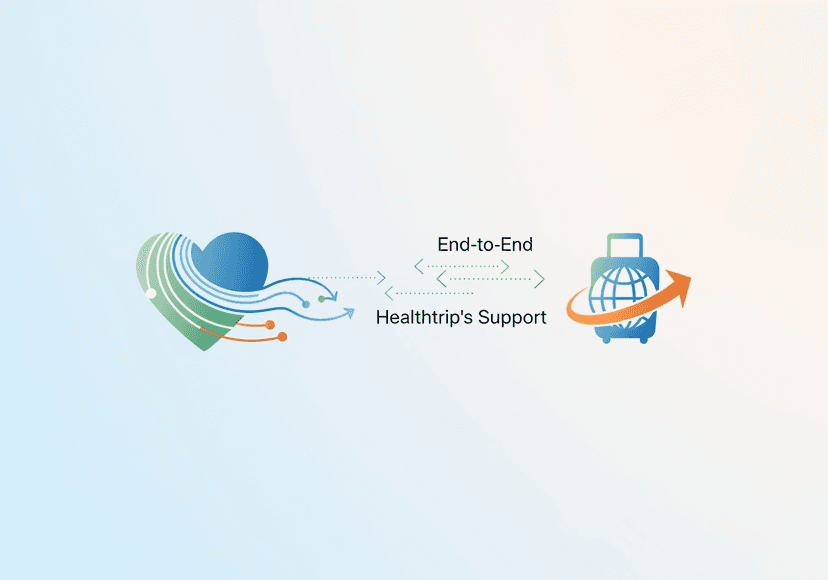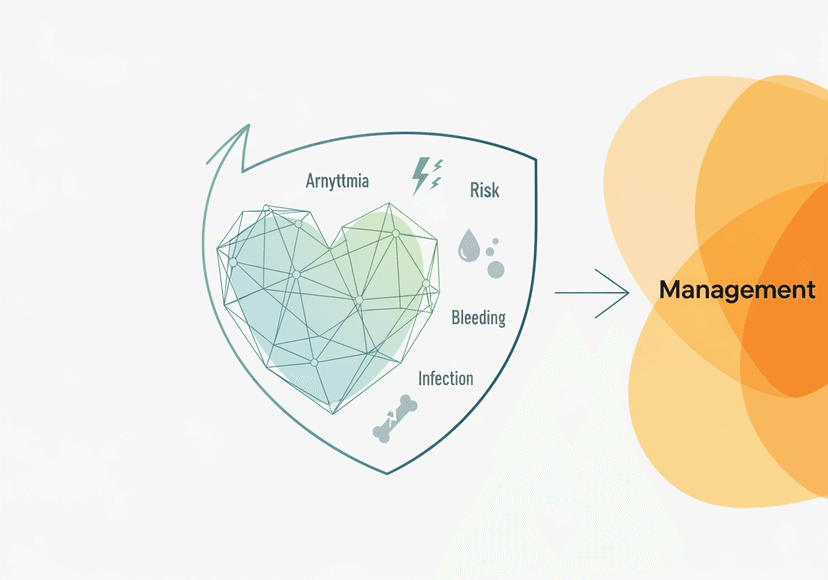
Precision Surgery: Understanding Minimally Invasive CABG
10 Oct, 2023
 Healthtrip Team
Healthtrip TeamMinimally Invasive Coronary Artery Bypass Grafting (Minimally Invasive CABG) is a surgical technique designed to address coronary artery disease with smaller incisions compared to traditional bypass surgery.
Most popular procedures in India
Over the years, the approach to coronary artery bypass has evolved, leading to the development of Minimally Invasive CABG. This progressive shift is driven by advancements in surgical techniques and technology.
Wellness Treatments
Give yourself the time to relax
Lowest Prices Guaranteed!

Lowest Prices Guaranteed!
Minimally Invasive CABG is performed to treat coronary artery disease while minimizing the impact on the patient's body. The primary goal is to achieve the same beneficial results as traditional CABG with smaller incisions.
This procedure is particularly beneficial for patients who seek a quicker recovery, reduced scarring, and less postoperative pain. Individuals with specific characteristics, such as those requiring only a few bypass grafts and with suitable anatomy, are often ideal candidates for Minimally Invasive CABG. This approach is personalized to each patient's needs.
Minimally Invasive Coronary Artery Bypass Grafting Procedure
Minimally Invasive Coronary Artery Bypass Grafting (Minimally Invasive CABG) involves a meticulous surgical procedure designed to address coronary artery disease while minimizing the impact on the patient's bod
Before Surgery
1. Patient Evaluation and Selection:
- Thorough assessment of the patient's medical history, overall health, and specific cardiovascular condition.
- Identification of suitable candidates based on factors like the number of grafts required and vessel anatomy.
2. Pre-operative Tests and Assessments:
- Comprehensive testing, including imaging studies and blood work, to ensure a clear understanding of the patient's cardiovascular health.
- Assessment of the patient's lung and kidney function to optimize overall readiness for surgery.
3. Lifestyle Adjustments Before Surgery:
- Guidance on lifestyle modifications, such as dietary changes and smoking cessation, to improve overall health and enhance surgical outcomes.
During Surgery
- Anesthesia:
- The patient is administered general anesthesia to induce unconsciousness and prevent pain during the procedure.
- An endotracheal tube may be inserted to assist with breathing during the surgery.
- Incision Placement:
- Small incisions, often between the ribs or through the sternum, are made to access the chest cavity.
- Placement depends on the specific approach chosen by the surgical team.
- Endoscopic Guidance:
- An endoscope (a thin tube with a camera) is inserted through one of the incisions.
- The camera provides a magnified view of the surgical site, aiding the surgeon in navigating the blood vessels.
- Artery and Vein Harvesting:
- Grafts are harvested, commonly from the internal mammary artery and saphenous vein, for use as bypass conduits.
- Specialized instruments assist in delicate vessel handling.
- Graft Attachment:
- The harvested grafts are then attached to the blocked or narrowed coronary arteries to bypass the obstructed blood flow.
- Techniques may include anastomosis, where the graft is sewn onto the coronary artery.
- Monitoring and Precision:
- Continuous monitoring of vital signs, including heart rate and blood pressure, is maintained throughout the surgery.
- Specialized instruments and, in some cases, robotic assistance may be used to enhance precision.
- Closure:
- Once the grafts are successfully attached, the surgeon closes the small incisions using stitches or staples.
- Chest tubes may be inserted to drain any excess fluids from the chest cavity.
After Surgery
1. Recovery Process and Timeline:
- Introduction of a carefully managed recovery plan to aid the patient's healing process.
- Monitoring for potential complications and ensuring a gradual return to normal activities.
2. Pain Management:
- Administration of pain medications to alleviate discomfort while minimizing side effects.
- Utilization of pain management strategies to enhance overall recovery.
3. Rehabilitation Exercises and Activities:
- Gradual introduction of rehabilitation exercises to improve strength and mobility.
- Customized rehabilitation plans based on the patient's individual needs.
- Scheduled follow-up appointments to monitor recovery progress.
- Ongoing cardiac rehabilitation programs to support long-term cardiovascular health.
Comparison with traditional CABG
| Feature | Minimally Invasive CABG (MICS CABG) | Traditional CABG |
|---|---|---|
| Incision size | Smaller (3-5 inches) | Larger (6-8 inches) |
| Sternotomy | Not required | Required |
| Hospital stay | Shorter (3-5 days) | Longer (5-7 days) |
| Recovery time | Faster (2-4 weeks) | Slower (4-6 weeks) |
| Pain | Less | More |
| Blood loss | Less | More |
| Risk of infection | Lower | Higher |
| Risk of stroke | Lower | Higher |
Results of Minimally Invasive CABG
- Faster Recovery:
- Minimally Invasive CABG allows for a quicker return to normal life, reducing disruption to daily activities and improving overall patient satisfaction.
- Reduced Discomfort:
- The procedure minimizes postoperative pain, enhancing patient comfort during the crucial recovery phase and supporting a positive post-surgical experience.
- Minimal Scarring:
- Smaller incisions contribute to minimal scarring, addressing both physical and emotional concerns about appearance and promoting self-confidence.
- Early Mobility:
- Early mobility aids in preventing complications and expedites recovery, emphasizing the importance of a swift return to an active lifestyle.
- Effective Revascularization and Long-Term Outcomes:
- Minimally Invasive CABG offers comparable revascularization efficacy, providing sustained benefits for long-term cardiovascular health and a better quality of life.
Tips for Preparing Yourself
- Inquire about the procedure to ease uncertainties.
- Establish a network of friends and family for emotional support.
- Follow prescribed exercise routines for improved cardiovascular health.
- Engage in light physical activities to enhance overall fitness.
- Ensure adherence to preoperative physical therapy recommendations.
- Follow dietary restrictions provided by the healthcare team.
- Focus on a nutrient-rich, balanced diet for overall health optimization.
- Maintain adequate hydration in the days leading up to the surgery.
Key Benefits of Minimally Invasive CABG:
- Quicker Recovery:
- Accelerated return to normal activities, minimizing disruption to daily life.
- Reduced Discomfort:
- Minimized postoperative pain enhances patient comfort during recovery.
- Minimal Scarring:
- Smaller incisions contribute to aesthetically favorable outcomes.
- Effective Revascularization:
- Comparable efficacy to traditional CABG in restoring optimal blood flow.
- Improved Quality of Life:
- Reduction in symptoms associated with coronary artery disease enhances overall well-being.
- Technological Precision:
- Utilization of advanced tools ensures a precise and targeted approach.
Risks and Complications
1. General Risks Associated with any Surgery:
- Infection at the surgical site.
- Adverse reactions to anesthesia.
- Blood clots and related complications.
2. Specific Risks Related to Minimally Invasive CABG:
- Possibility of injury to blood vessels or organs during the procedure.
- Pneumothorax (collapsed lung) in cases involving thoracoscopic incisions.
- Potential for longer operative times compared to traditional CABG.
How to Prevent Complications ?
- Follow postoperative care instructions diligently.
- Avoid strenuous activities until cleared by the healthcare team.
- Attend all scheduled follow-up appointments for monitoring.
- Take prescribed medications as directed by healthcare providers.
- Maintain a record of medications to ensure consistency.
- Adopt heart-healthy habits, including regular exercise and a balanced diet.
- Participate in cardiac rehabilitation programs if recommended.
- Quit smoking and limit alcohol consumption for long-term cardiovascular health.
In summary, Minimally Invasive Coronary Artery Bypass Grafting (Minimally Invasive CABG) represents a breakthrough in cardiac surgery. With benefits like faster recovery, reduced discomfort, and minimal scarring, it stands as an effective solution for coronary artery disease. The key to maximizing its advantages lies in patient education and transparent communication with healthcare providers, creating a collaborative environment for optimized outcomes and improved cardiac health.
Related Blogs

How Healthtrip Ensures Quality & Safety in Cardiac Surgery Procedures
Detailed guide on cardiac surgery, featuring doctors, hospitals, risks, recovery,

End-to-End Logistics for Cardiac Surgery with Healthtrip's Support
Detailed guide on cardiac surgery, featuring doctors, hospitals, risks, recovery,

Healthtrip's Care Coordinators: Your Support During Cardiac Surgery
Detailed guide on cardiac surgery, featuring doctors, hospitals, risks, recovery,

Top 5 Indian Hospitals for Cardiac Surgery
Detailed guide on cardiac surgery, featuring doctors, hospitals, risks, recovery,

Post-Cardiac Surgery Diet and Lifestyle Tips
Detailed guide on cardiac surgery, featuring doctors, hospitals, risks, recovery,

Common Risks in Cardiac Surgery and How Healthtrip Manages Them
Detailed guide on cardiac surgery, featuring doctors, hospitals, risks, recovery,










